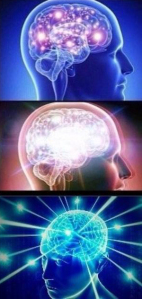
 As yet another bill is introduced into parliament to reduce the power of unions, Guardian Australia’s Van Badham has developed a quiz to test your knowledge on workers’ rights in Australia.
As yet another bill is introduced into parliament to reduce the power of unions, Guardian Australia’s Van Badham has developed a quiz to test your knowledge on workers’ rights in Australia.
A report on wage suppression commissioned by the Transport Workers’ Union revealed this week that $100bn is going walkies from Australia’s superannuation balances.
According to the Centre for Future Work, a 40-year-old worker affected by wage suppression in the form of wage theft, penalty rate cuts or a cancelled enterprise agreement, is likely to lose between $30,000 to a whopping $270,000 from their superannuation balance by the time they retire.
The researchers’ verdict is that the situation is a “time bomb” underneath the economy. It’s not the only one.
Because when wages are suppressed in these ways, also losing out is Australia’s taxation revenue base. Superannuation is taxed, and lower superannuation savings mean a lower taxation yield. Not to mention, wage suppression also reduces the taxation yield from income tax. And as lower wages mean lower consumption, the taxation raised from purchases – the GST – is lower, too.
You’d think a Coalition that demanded government from the Australian people based on its insistence of a “budget emergency” would be strapping on a panic suit and wading into action waters on wages.
That is, of course, unless you were already acquainted with the Turnbull government, and knew they had other priorities than the things they promised or the things we need. Those priorities are: reinforcing, extending and enhancing the legislative framework that structurally encourages wage stagnation. You know: bashing unions.
What unions do is fight wage suppression. That is the whole gig. Whether it’s on the level of an individual worker subject to wage theft or exploitation or a collective bargaining process for industry-wide improvement to job conditions and pay increases. That’s why study after study has shown that union organising is the difference between economic equality and inequality, that union members not only bring home higher wages but that union membership lifts the wages of non-unionised workers as well. Decades of anti-union practices in Australia include restrictions on the right to strike and capacity to organise so severe we’ve been condemned by the UN’s International Labor Organisation.
But it’s not enough for Turnbull and gang, who, if they have made the correlation between limited union capacity and low wage growth, are indulging a will to ignore it. Just in the last couple of weeks, they’ve tried to deny union members the right to silence. They’re currently trying to deny union members the right to elect their own leadership – something that, if passed in their “ensuring integrity” bill, Australia would suddenly have in common with North Korea, Iran, Turkey and China.
The Australian newspaper ran a headline back in May, claiming the national crisis of low wage growth was “a mystery” to the RBA. Mystery? Is it possible that the shocking transformations undergone in the modern Australian workplace have just somehow escaped the notice of the RBA, and the Australian for that matter? Of greater concern: have they escaped the attention of the public at large?
It was with these questions in mind I approached economist Dr Jim Stanford from the Centre for Future Work, to assist in the preparation of a fun quiz. Test your game buzzers, people! It’s time to play: how much do you really know about today’s Australian workplace?